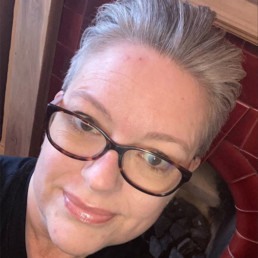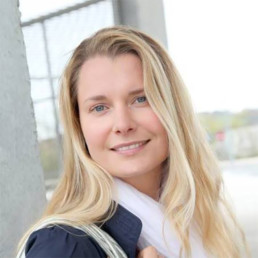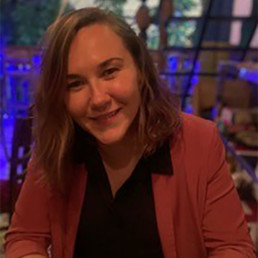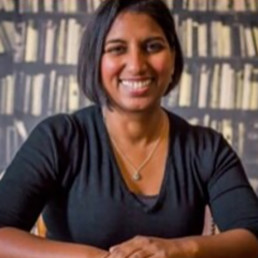Supporting pupils with ADHD in schools

Written by Nadia Hewstone
Nadia is a certified executive school leadership coach. She left headship to start Destino Coaching and now supports school leaders with their own development as well as development of their teams.
Even as a parent of a child with ADHD, as a teacher I struggled to find and implement strategies to support my students with the diagnosis. I found many things that ‘worked’, but many more that didn’t. The search continued when I became a Headteacher who was supporting colleagues who also struggled to find the answer. Where things changed was when I stopped looking for what worked and started understanding what I was happening for those students.
In his book Shattered Minds, Gabor Mate identifies a number of strategies, that spoke to me and that I wished I’d discovered sooner in my career. He makes a case for reducing ‘imposed structure and discipline’ and increasing ‘freedom for individuality and self-expression.’
I was relieved he didn’t go on to advocate unstructured classrooms, as I know that would be nearly impossible, in the current climate. Instead, he talks about recognising the ‘supressed energy’ of students with ADHD through our responses to them, which so often includes sarcasm, shaming and shouting.
This principle is the first to master in our endeavour to support these creative and courageous young people. The secret to success in this matter, for teachers, lies in not adding to the problem by alienating these student any further.
I saw the impact of this in my own school when the teaching staff and I made a pact to refrain from any type of shaming response to a child’s behaviour. We did some work as a team to recognise our triggers and manage our reactions to be able to keep to the pact. Behaviour in this group of students improved dramatically.
This came back to bite me again, when my own child’s behaviour invoked explosive responses in me. I was at my wits end. Then I realised I was angry with my child for having the struggles associated with having ADHD. With lots of support from family, I learnt to change the way I responded to her and I worked on accepting her exactly the way she was. Our lives and our relationship improved remarkably.
Unconditional positive regard doesn’t have to come just from parents, we can adopt it as teachers too. It require honestly, courage and a safe environment, but it is possible. Gabor argues that ‘understanding the student is transformative’ and I have seen this first hand, as a teacher and as a parent. There are other considerations such as working with parents, tailored access arrangements in exams and planning for the need to move and play but the commitment to stop trying to fix children with ADHD is the power pill we all need to take.
So when I work with people who want to provide better support for young people with ADHD, I start with pressing the stop button on wishing they were different and start work on meeting them where they are. All the other work is easy after that.
The Heterosexual Matrix

Written by Dr Adam Brett
Adam has completed a doctorate exploring the experiences of LGBT+ secondary teachers. A presentation of his findings can be found here. He also co-hosts a podcast called Pride and Progress, @PrideProgress, which amplifies the voices of LGBT+ educators, activists and allies.
“Children who need to be taught to respect traditional moral values are being taught that they have an inalienable right to be gay”
– Margaret Thatcher, October 1987.
Thanks for that, Margaret. You and your government created a culture of fear, silence and moral panic surrounding LGBT+ lives that continues to this day. Your speech continued, that “all of those children are being cheated of a sound start in life – yes, cheated!”.
She was right about one thing. Section 28 meant children were being cheated of a sound start in life.
Section 28 cemented schools as heteronormative spaces, where being heterosexual and cisgender were silently assumed, leaving LGBT+ people with the impossible decision or whether to be invisible or hyper-visible.
What a choice to have to make.
Do I hide my authentic self to fit in with the legislated normativity of schools, or do I make myself visible and put myself at professional and personal risk?
Patai (1992) refers to this form of hyper-visibility as ‘surplus visibility’, where a person is ‘extrapolated from part to whole’ and seen to represent the entirety of a minority group.
You might be thinking that a lot has changed since the repeal of Section 28 nearly 20 years ago in England. It’s true, a lot has changed and there has been significant cultural and legislative improvements for LGBT+ people. However, schools remain stubbornly heteronormative and cisnormative environments.
Think about the aspects of school that are predicated on a static, binary gender. Toilets; changing rooms; sports; gendered language; uniform; seating plans; residentials. The list goes on. What does this communicate for those who cannot or will not fit into the neat binary of male or female? That they don’t belong.
We could consider similar examples about the ways in which heteronormativity is maintained as the social order in schools. The curriculum; ethos; culture; policies; microaggressions; homophobia; the hidden curriculum; role models.
We can conceptualise all these examples as code.
I love to use the film The Matrix as a metaphor to explain the ways in which socially constructed ideas such as heteronormativity are held in place. When we are plugged into the matrix, we believe it’s real and can’t see the code that is continually constructing it. We can’t imagine alternatives as it’s all there is, in the same way that we can’t think outside of language.
However, when we develop the critical awareness of what is upholding this normativity and develop a language to name it, we become unplugged. LGBT+ people have the critical awareness to identify the ways in which schools seek to include or exclude them. Section 28 plugged us into a matrix of understanding where the silent assumption of cisgendered heterosexuality was so entrenched, that to this day, being an LGBT+ person in school can be a point of constant navigation and information management. Exhausting.
As educators and leaders, we need to listen to the lived experiences of our LGBT+ students and colleagues to create a culture, curriculum and language which can disrupt this code. We need to name things as heteronormative; we need to name things as cisnormative; we need to name things as microaggressions. We need a new language: one that allows us to think outside of the current heterosexual matrix. We need to create schools and spaces where LGBT+ people feel safe and included, without attracting surplus visibility.
Section 28 cheated a whole generation of LGBT+ young people out of a sound start in life. It’s time to unplug the matrix and make sure it doesn’t happen to the next generation.
Adam Brett
@DrAdamBrett
My Lip Sync Battle

Written by Emma Ludlam
Emma has worked in Early Years for 14 years and is into her 8th year as Head of Nursery in a London Independent School. Emma has a background in the NHS and is passionate about Early Years education and development with a special interest in Disability, Diversity and Inclusion. Emma is also an EYFS Co-ordinator, dovetailing the two ends of the EYFS in her school.
I only ever knew one person with Dysphonia and Dysphagia before I was affected. My Father’s voice slowly disappeared and his swallowing was affected by Progressive Supranuclear Palsy. I always found it so distressing that he struggled to express his needs and couldn’t eat “normal” food because of the risk of choking. I never imagined I would be in a similar position in my early 40s.
In 2020, some surgery to my throat caused some nerve damage, leaving me with a paralysed vocal cord. My cord became peeled back and stuck, exposing my airway and damaging my voice.
Until you lose your voice, you have no appreciation of how much you rely on it and how much it makes you – you! As Early Years Professionals, we’re well practiced at supporting children to develop communication and language and readily support communication difficulties in the very young, those with EAL and those with a SEND that makes communication more challenging. I didn’t appreciate that I would find myself in Speech Therapy too as an adult. Voice disorders are wholly under-recognised; arguably less common than hearing or sight loss; people find it more difficult to be inclusive and more awareness is desperately needed. I am still me – just a very quiet me.
My voice is typically very weak and lacks volume. Even a simple boiling kettle can drown me out and I sound very raspy; very similar to someone with a bad dose of laryngitis. I lack expression and my tone sits a little higher than my pre-damaged voice. I have lost much of what makes me who I am. I cannot sing or laugh with any sound and the voices and accents used to read a good story, are no longer there. Dreams of reading Harry Potter to my grandchildren seem to slip further and further away. I used to love singing; (I’m not saying I was good!) whether it be in the shower, with young children or even belting out a good old Whitney Houston at karaoke – it’s something that has come very hard. I’ve upped my Lip Sync Battle game massively!
One of the more complex aspects of my condition is the accompanying dysphagia. At my worst, simply a sip of water would cause me to choke until my face was red and the tears rolled down my face. Eating is no longer an enjoyable experience; more a process of dodging aspiration and learning what you can eat and drink. Food becomes a hazard – the Squid Game of eating and drinking! Dysphagia increases risk of aspiration (food enters the trachea and lung) and can cause chest infections and pneumonia – the gift that keeps on giving! I now enjoy, safely, a partly liquidized diet and am more aware of what I can and can’t eat, but it means eating in public or outside of home is still incredibly tricky and embarrassing for me.
So how do I function? Adaption and acceptance (which is very hard to achieve) is a huge proportion of “moving on.” Waking up from anaesthesia to find yourself so changed is a real challenge. There are several aids that I couldn’t live without. My dog has been incredibly adaptive and now knows that when I grab my high decibel whistle (because I cannot call or shout) that it’s time for a walk and he has taken on board a change to hand signals well – it seems you can teach an old dog new tricks! The children I work with have been the most adaptive and that gives me real heart for the future of diversity and inclusion in all walks of life – they are our future. They have accepted my voice amplifier (a small speaker box I wear attached to a mic headset) and this helps me to be louder and is less straining for me. On most video calls, I think people assume it’s just a mic – it’s slightly less familiar when worn off screen. My other most treasured possession is my face mask from National Spasmodic Dysphonia Association which reads “Bear with me I have a voice disorder;” it allows people in shops etc an opportunity to understand my needs and help me – hearing me through a mask is impossible. I also use my iPhone to write notes for others to read.
It is essential that we take time to understand all types of communication needs. We need assistance; understand I have a lot to say and need that chance. Accepting that we cannot take speech for granted when engaging with others is a huge first step. Maintaining independence and inclusion should be our aim in all walks of life.
I challenge you to a Lip Sync Battle!
Inclusive Recruitment

Written by Julie Reed
Julia Reed holds a Master of Arts in Education. She spent six years coaching students. She is a freelance writer now. She can handle writing on any topic.
Our society is ever-evolving. Increasingly, we are making space for, and actively listening to, traditionally underrepresented groups within our community.
Diversity is essential, as much in personal life as it is in business. Accessible and inclusive workplaces reflect an organisation’s culture and inclusive policies. That is why the concept of inclusive recruitment appeared.
Inclusive recruitment is a forward-thinking corporate practice that involves creating diverse professional environments. It’s important to note that hard and soft skills are not neglected here. They are still the vital recruitment requirements. However, there is no discrimination based on gender, age, race, or background beyond that. Inclusive workplaces offer accessibility to all.
Why are inclusive hiring practices essential?
Inclusive recruitment is in the spotlight, as it is exceptionally vital for a company’s success.
First of all, inclusive recruitment helps level the playing field for all applicants and fight against recruitment bias and other forms of discrimination.
From a business perspective, inclusive recruitment provides many advantages. Inclusivity in the hiring process is a way to make business further productive. In diverse teams, people are more collaborative, which means business is more powerful. Equality and diversity in the workforce encourage individual contribution and responsibility, thus giving birth to new ideas and raising a company to a whole new level. There is also higher retention amongst talented employees.
Why is it essential to have a diverse and inclusive workforce?
The positive impact of diversity and inclusion is no longer debatable.
Why? Let’s look.
When decision-makers and HR teams eliminate possible biases, they greatly improve the talent acquisition process. Once your business’s image is set up as an open, non-discriminative, and globally accepted firm, then a diverse range of employees prefer to become a part of your environment. That opens up a way to different perspectives and future opportunities.
So, it is a mutually beneficial interchange. Businesses help unrepresented groups build a career with no discrimination, and companies are more profitable and innovative.
What is also vital to recall is that by combining different experiences, business stakeholders can have a broad range of understandings.
Inclusive hiring practices are linked to a company’s financial success.
Why so?
Combining different experiences makes it easier for business stakeholders to understand their customers’ pains. With better understanding, companies can make more valuable propositions to meet customers’ needs as accurately as possible, showing them many shared interests between them.
Here are some relevant facts and statistics to prove the above theses:
- Above-average-diverse businesses are almost 20% more innovative than below-average-diverse ones
- 33% of ethnically diverse teams outperform less diverse teams.
- Diverse companies are 70% more likely to capture new markets.
Research also shows that inclusive teams are more innovative and are also more engaged and creative.
Having diverse teams is crucial in the global economy. What’s more, it is opening up lots of unique advantages for companies and employees. For example, hiring more talents, opening various perspectives, better business performance, and so on. Make sure you have a complete picture of the benefits of diversity and inclusion recruitment strategies!
For the full blog and toolkit, you can read more here.
Do This, Not That

Written by Jaya Hiranandani
Jaya is an international school teacher currently based in Taipei, Taiwan. She is in awe of the unlimited potential of the learning that can happen in the classroom and, as a result, is passionate about inquiry-based learning, student and staff wellbeing, and DEI.
I am from the north of India and I believe that a combination of deeply ingrained acceptance of hierarchy and authority, assumption of best intentions and sheer luck have helped me live in a foreign country and in multiple international communities relatively unscathed from the effects of overt racism.
However, I have spent a lot of time baffled and confused by covert racism. Covert racism are often instances of racism so subtle that the victim is left wondering if they have been discriminated against. Psychologist Derald Wing Sue, Ph.D. from Teachers College Columbia University defines “racial microaggression” as “one of the “everyday insults, indignities and demeaning messages sent to people of colour by well-intentioned white people who are unaware of the hidden messages being sent to them.”
Covert acts of racism, apart from being distressing and confusing for the recipient, can be difficult for people from the dominant culture to accept “because it’s scary to them,” Professor Sue asserts, “It assails their self-image of being good, moral, decent human beings to realise that maybe at an unconscious level they have biassed thoughts, attitudes and feelings that harm people of colour.”
When I was sidelined, ignored or marginalised, the younger me was left wondering- Was it me, them or the situation? Am I being too sensitive? Did I do something wrong? Is it just an individual personality trait or is there something bigger here? Is this person incapable of trusting me just because I am different from them? Am I being sidelined because I am not interesting enough, or is the other person just having a bad day? Is this person not interested in knowing me because they think they already “know” how I am from their experiences with other people of my ethnicity?
As I grew older, patterns began to emerge and I have realised that ALL these could be true in one situation or the other and I have gotten better at deciphering between my own sensitivities and other people’s biases.
Here are six suggestions I have to develop awareness about and avoid engaging in covert racism at our educational institutions:
1. Learn how to say my name correctly, don’t hesitate to ask if needed
First things first: Yes, the names of people of colour often sound unfamiliar or sometimes, difficult to pronounce correctly. Try your best to pronounce them correctly, ask for guidance and never shorten someone’s name for your convenience before asking them first.
2. Be socially inclusive, but don’t overcompensate
You don’t need to become my friend, you just need to be friendly and considerate.
At a previous school of mine, I was unwelcome at the staff book club for many years. There was a poster about it on the staff bulletin board and when I expressed my interest to the book club leads, I was given sketchy details in a lukewarm tone with no invitation forthcoming. It was not until someone posted a well meaning invitation on the school’s online social messaging board that I was let in. I still can’t be sure why I was kept out of a monthly get-together based on a love for reading which I shared with the members of the group.
People of colour understand that you will be more comfortable with people who you can discuss your food with and can complain about things with; we know this because we do the same. Humans are wired to seek out people with similar experiences as theirs- it helped us during our cave-residing days when it was important to stick to our tribe to stay safe. We instinctively connect with people who share our culture and in my experience, a shared culture transcends shared race or ethnicity. So none of us should be under any kind of pressure to have diverse-looking close friends as long as we treat people fairly, equally and respectfully.
When we value people for their intrinsic qualities, we will naturally include diverse people in our social circles. When we look beyond people’s idiosyncrasies and external looks, we find the people we share our values and ambitions with.
3. Find diverse ways to talk to people of colour, don’t just discuss topics related to their race or country
I have a colleague who always talks to me about food, clothes or movies from my country. We have worked together for half a dozen years and it makes me wonder if she sees me as a multifaceted person that I am.
Do you feel compelled to talk to ethnically diverse people only about their country or culture? Or do you plunge into awkward silence wondering what on earth you should talk about that will not be offensive and will be politically correct? Find the middle path. Yes, I am happy to talk about which Indian restaurant in town I find the most authentic. No, I don’t want to be always seen through the lens of my ethnicity as I am so much more beyond my origins.
4. People of colour commit racist faux pas too, don’t ignore it.
Racial prejudice oc4urs both ways and though it cannot be termed as racism due to imbalances in power held by white people and people of colour, there is no reason to condone it. When you see or hear POC being racially biased, gently question their judgement and call it out.
5. Talk openly about racial, cultural, ethnic differences, don’t be colourblind
Once when I mustered the courage to mention to a white male school leader that, ambiguous as it is, covert racism in international schools does exist, I was immediately and emphatically told that “no one is out there to get me” and basically made to feel that I was being too sensitive! Denying that racism in any form exists around us is colour blindness and it is a sureshot way to shut any dialogue about it.
Colorblindedness denies the prevalence of differences based on race and though it is rooted in the goal to promote racial equality based on race-neutral policies, it has led to perpetration of systemic racism. If we pretend that race does not exist, we deny the presence of race-based inequities in our communities. Open dialogue about racial and ethnic differences at your school as and when needed. A paper published by Harvard social scientists in The Current Directions in Psychological Science states that, “people exposed to arguments promoting colour blindness have been shown to subsequently display a greater degree of both explicit and implicit racial bias.”
The responsibility of open dialogue about bias, prejudice and race falls more heavily on leaders, and it’s important that schools are now developing explicit DEI (Diversity, Equity and Inclusion) policies for all stakeholders to follow.
6. Develop self-awareness about your biases, don’t equate good intentions with correct action
It has taken me years of catching myself judging people with tattoo-covered bodies to stop making assumptions about them. I recently briefly dated a person with a wing chest tattoo and a whole arm covered with a colourful assortment of motifs and images, and I learnt intriguing stories behind some of his body art.
When we observe our own thoughts and examine our biases and assumptions, we can check ourselves every time we make a sweeping generalisation in our heads about someone based on their ethnicity or physical features.
Sometimes issues will be attributed to bias even though they may have stemmed from poor communication, differences in expectation, individual personality traits and so on. Again, be curious and ready to find out more.
Most of us genuinely want to live in a diverse and inclusive world with equity for all. However, the best intentions are futile if they are not met with the right actions. Let’s marry our best intentions with wholehearted efforts and create workplaces where no one feels marginalised because of their physical features and colour.
References:
DeAngelis, Toni 2009 Unmasking ;Racial Microaggressions’ American Psychological Association Vol. 40, (No. 2) pp. 42 <https://www.apa.org/monitor/2009/02/microaggression>
Alberta Civil Liberties Research Center (ACLRC) The Myth of Reverse Racism Accessed January 2022 <https://www.aclrc.com/myth-of-reverse-racism>
Afpelbaum, E.P., Norton, M.I., and Sommers, S.R. 2012 “Racial Color Blindness: Emergence, Practice and Implications” Current Directions in Psychological Science 21 (3) pp.206 <https://www.hbs.edu/ris/Publication%20Files/Racial%20Color%20Blindness_16f0f9c6-9a67-4125-ae30-5eb1ae1eff59.pdf>
Stephen M.R. Covey May 2021, Association of California School Administrators, Accessed January 2022 <https://content.acsa.org/six-ways-to-help-your-schools-be-more-inclusive/>
HR’s Role in Encouraging Diversity

Written by Paul Holcroft
Paul Holcroft is the Managing Director at Croner.
Despite the UK being known for championing cultural and social diversity, it’s not always present in the business world.
HR departments and managers alike are legally bound to protect their employees from inequality and injustice. Yet more than a third (36%) of UK employees have experienced workplace discrimination and harassment.
Businesses should aim to promote a working environment that’s fair, diverse, and inclusive. Which increases both employee morale and business reputation.
Learn why diversity and inclusion is important, laws for applying equality, and how HR departments can help encourage workplace diversity.
What is workplace diversity?
Workplace diversity is about understanding and accepting employees from different backgrounds and values. It’s so much more than ticking ‘diversity boxes’.
HR departments must ensure their hiring procedures and policies don’t discourage people from applying due to potential prejudice or discrimination.
Having a workplace that promotes equality and diversity helps develop a culture of inclusion. Where all mindsets and talents can work cohesively with one other.
Why is diversity in the workplace important?
HR departments must legally comply with equality laws which protect their staff from ill-treatment. The principles of diversity and equality come under the nine protected characteristics, outlined in the Equality Act (2010). These are protections for:
- Age, disability, gender, marital status, pregnancy, race, religion, gender reassignment, and sexual orientation.
Hiring from a diverse pool allows employers to tap into an array of skills, backgrounds, and experiences. Individual thinking and creative exploration can accelerate economic advancement and business success.
What are the laws on workplace diversity?
Under equality and diversity laws, employers are obligated to protect their employees from workplace discrimination, harassment, and victimisation. These laws include:
- The Equality Act (2010).
- The Human Rights Act (1998).
There’s more to it than simple legal obligation. Without tackling inequality and prejudice, employees will feel unmotivated and unvalued. They could decide on quitting their jobs, or even raising discrimination claims to employment tribunals.
Either of them can lead to costly impacts on your business. You could face negative effects to your business reputation. Not to mention coughing up legal fees for compensation payment and court attendance.
How HR can encourage workplace diversity
In recent times, socio-economic values have helped grow a level playing-field for people from all walks of life. We arguably haven’t reached the optimum point yet; however, we’ve come a long way historically.
HR departments are efficiently positioned for introducing diversity to the workplace. Through training programs and HR advice for employers, building a diverse workforce is achievable within any type of company.
Here are a few steps businesses can take to encourage workplace diversity and inclusion:
Widen the talent pool boundaries
It falls on the HR department, in any business, to deal with onboarding and hiring. Looking for candidates with suitable skills and talents is normally done through recruitment pools.
But if these pools only have one type of worker, you’re denying your business so many accolades. It’s for your own benefit to utilise the recruitment process entirely.
Hiring candidates from diverse backgrounds can improve overall business balance. But be weary not to only employ them for the wrong reasons. It’s futile to look like an inclusive business aesthetically. Be sure to hire diverse candidates for fair and just reasons.
Encourage diversity on all work levels
Employing one diverse employee doesn’t mean your business stands as inclusive. A fake front like this will always crumble in the end, leading to impacts to your brand-name and productivity.
Rather than pretending, set targets of reaching employee satisfaction on all levels. And we mean all levels; not just in lower-position jobs, but as mentors and leaders.
Establish a fully-fledged pledge for diversity through equal opportunities in promotions, positions, and training.
Creating an inclusive environment
It falls on HR and managers to create a safe and comfortable working environment. But actively building a workplace that champions inclusion and diversity will grow benefits beyond imagination.
A workplace should home an atmosphere where collaboration, respect, and support for all can increase productivity and involvement.
Creating an inclusive environment is a key responsibility for HR departments. Beyond solving allegations and disputes, they need to ensure all staff members feel included and protected.
Set the precedence for diversifying businesses
On an everyday basis, employees may be at ease with workplace diversity. But it’s always worth providing information, guidance, and policies on encouraging diversity, equality, and inclusion.
Standing as a company that portrays workplace diversity will set your brand above and beyond others – internally, and on a global scale.
Establishing diversity, equality, and inclusion within your company will ultimately lead to business success – now, and in the near future.
Increasingly Visible: Being an ‘Out’ LGBTQ+ Educator

Written by Vickie Merrick
PE and History Teacher at an International School in Rome and has previously taught in Vietnam and the UK.
This post was very much inspired by Dr Adam Brett’s (@DrAdamBrett) recent talk about his PhD findings on what it means to be a visible LGBT+ educator. It is a personal reflection of my journey to becoming visible in an international teaching community.
During my ITT year there wasn’t the same talk and work that there is now about DEI, social justice and decolonising the curriculum. As a white British cis woman going through my training year, I never thought about the importance of representation. “If you can see it, you can be it” wasn’t a phrase that ever crossed my mind.
Now I realise and acknowledge that I have white privilege, I’m cisgender, I’m middle class (in that whilst my parents consider themselves working class, I went to a grammar school, I’ve gone to university twice and am currently back again completing an MSc and these experiences have afforded me the opportunity to emigrate and continue my career abroad) and I was lucky enough to be born in the Global North. There are many things about my life that mean I have an easier time than so many people in the world.
I’m also a member of the LGBTQ+ community. And I have a chronic health condition that impacts both my physical and mental health. These two areas are the only parts of my life where I have ever faced any difficulty due to my identity.
Section 28 left a strange underlying legacy on schools in England. Although I began working in schools a long time after its 2003 repeal, I heard “don’t tell the students about your personal life, it’s none of their business who you are” more than once in the staffroom. Even though my straight colleagues would quite openly talk about their partners/spouses, the insinuation was that I shouldn’t allude to being a gay woman in front of my classes.
In addition I was aware of the cultural background of my students and knew that some may not have heard positive things (or anything at all) about LGBTQ+ people at home. If I was in the same situation now I don’t think I would hide myself at the risk of causing offence (offence after all is taken not given) and would have used it as an educational opportunity to discuss embracing others regardless of their identity. But I was a new teacher concentrating on learning how to teach (something I’m still learning) and was not too concerned with being a representative of the LGBTQ+ community.
There were students who found out that I was gay and I never encountered any problems from them, if anything they were extremely positive and open about wanting to support LGBTQ+ people. On the other hand, I did once experience a student using ‘gay’ and ‘f**’ as an insult to another student in a lesson I was covering so I followed the school policy and the student waited outside for an on call member of staff. The member of staff had a chat with me and the student then brushed off the incident and sent the student back into the lesson. Again, looking back, as a more experienced teacher, I wouldn’t have let it slide. But as an NQT, I didn’t feel that I had any power to insist that this was homophobic language and should be treated in a serious way that shows the student it is not acceptable.
The final reason that I was never fully visible in my first school was more of an internal one. I teach history and PE. We’ve all heard of and perpetuated (myself included when I was a kid at school) the stereotype of the lesbian PE teacher. I didn’t want to be a stereotype. I’d previously been in the Army Reserves for a short time and found the same stereotype about female soldiers. That wasn’t my reason for leaving the Reserves but with the Army, working in sport, and being a PE teacher, it can get tiring constantly laughing with and brushing off people making jokes and having ‘banter’ about a part of who you are. And of course you laugh because they’re your colleagues and friends. They mean no harm but it’s the microaggressions that we know now to be aware of alongside our own unconscious biases that can build up and deeply impact people.
Leaving the U.K. and yearly visits to Pride Parades behind brought a change to my level of visibility. I left the U.K. with my partner and moved to Vietnam. Throughout the recruitment process we were up front about applying as a couple and didn’t face any problems when it came to contracts, housing allowances and dealing with HR in our new country. There was a surprising moment when the estate agent who was sorting out our rental apartment said the landlady was concerned that two single western women would have lots of men visiting and would receive complaints. The estate agent luckily had read the situation well and assured the landlady that she didn’t have to worry about frequent male visitors staying over…
In school itself it was a different story. We often talk about walking into our school and seeing a rainbow painted on one of the corridor walls with the words “love is love” below it. Talk about a welcoming sign. Again, at the beginning I didn’t intentionally come out to any of my students. Not through a conscious choice but I still didn’t really consider the positive impact it could have for LGBTQ+ students to see a visibly LGBTQ+ member of staff. There were other LGBTQ+ staff and couples at the school and openly LGBTQ+ students who felt they could be ‘out’ at school even if they couldn’t be at home due to the traditional values of their families. Over time, and partly due to the nature of international schools, many of the students my partner and I taught learnt that we were a couple- and exactly as it should be, they treated this as a total non-event. They treated us the same as the other teaching couples in the school. My form, however, were so excited on the day they noticed my engagement ring that I had to usher them out of the door to be on time for their first lessons because they wanted to stop and hear the full story of the proposal. And as we were getting ready to leave and say our final goodbyes in the midst of a lockdown and online learning, some of our grade 10 students were insisting that we sent wedding photos to one of our colleagues after the holidays so that they could see our dresses and hair and make-up.
In Vietnam, my visibility as an LGBTQ+ educator had increased because I felt supported by my colleagues, the school and the students. And the more visible myself and other LGBTQ+ educators were, the more I noticed the way the vast majority of our students, even though they were from all over the globe with different cultures, beliefs, values and backgrounds, treated their LGBTQ+ peers with an awareness, a kindness and acceptance. I left that school thinking that the kids are alright.
The transition into our second (well my third, as I had taught at two different schools in Vietnam) international school was where the first real challenges of being an ‘out’ educator were posed. And they were not posed by students. Recruitment during COVID was a struggle. We sent off around 40 applications and did about 15 interviews between us. We had been lucky to get jobs in Vietnam for our first international roles as it became quickly apparent that many other places were not as keen on hiring an LGBTQ+ teaching couple. Sometimes this was due to visa complications or job openings, other times it was the laws of the country (43 jurisdictions still criminalise lesbianism) and laws around housing. After a particularly challenging experience where we had offers rescinded because, after checking, the school decided their community wasn’t ready for an LGBTQ+ couple, we were feeling pretty disheartened.
Many of the schools we were applying to were IB schools. I still struggle to see how the IB, who preach about global communities and international mindedness, can promote schools and allow them to teach the IB programs when the school communities themselves are anti-inclusion.
Nearing the end of our tether with the recruitment process, my partner had an interview with a small school in Italy. Whilst they did not have a role for me, they were willing to make something part time if my partner was offered the job. The interview was a breath of fresh air. They were the first school who had asked about my partner or I as people and wanted to get an idea of us to find out how we’d fit into their community. They were upfront about wanting LGBTQ+ staff as they were aware that they had students who were part of the LGBTQ+ community and they didn’t always see themselves represented in the staff body. After accepting the jobs, my (now) wife was asked about joining the DEI team, and whilst she is careful as she knows this has become or can have the potential to be quite tokenistic in some schools, she is aware that she has the ability to do work with her team members around social justice and to help combat racism, sexism, homophobia, transphobia, ableism and other forms of discrimination within our school community.
For the first time in a school, as an educator, I have been a visible member of the LGBTQ+ community from the beginning. I am aware that I have a-sexual, transgender and non-binary students (and probably others who identify as somewhere on the gender/sexuality spectrum) and delight when they come to tell me about the first time they went to a pride parade or show me the rainbow item of clothing they have worn that day. Whilst I cannot know or understand all of their experiences, especially as a cisgender woman, I can be an empathetic listener from the large umbrella family that is LGBTQ+. The school has an LGBTQ+ club run by a member of staff who is an ally to the LGBTQ+ community and who knows that providing an inclusive space for our students is everyone’s responsibility. The community isn’t perfect and the country, with its strong religious affiliations, has laws against gay couples adopting. It is a work in progress in our school that will require buy-in from all its members to fully promote inclusivity and celebrate diversity, no matter what that looks like. But it is not tiring to be visible here. Every day when I tie up my rainbow laces (a great campaign from @Stonewall) I know the importance of showing my students that LGBTQ+ people are a part of their community, we’re here to stay and that’s very much ok.
What's in a Name?

Written by Malarvilie Krishnasamy
Malarvilie is a seasoned leadership consultant, coach, and trainer with over 20 years of experience in education. As a former history teacher and senior leader, she passionately advocates for coaching as a catalyst for transforming school cultures. Malarvilie offers accredited courses, endorsed by The Institute of Leadership, which develop emotional intelligence and assertive leadership skills. Her reflective and supportive programmes enhance staff morale and well-being, promoting humanity in leadership. A vocal proponent of equity, diversity, and inclusion, she actively engages as an ally through speaking engagements, workshops, and amplifying the work of others. Malarvilie is also deeply committed to promoting Personal, Social, Health, and Economic (PSHE) education, recognising its pivotal role in nurturing well-rounded individuals.
“What’s in a name? That which we call a rose
By any other name would smell as sweet.” Juliet
Do names matter?
According to Shakespeare, not so much.
My name is Malarvilie. It may seem unusual but in India, Malaysia and Sri Lanka amongst the Tamil, Malayalam and Telungu communities (about 200 million people) it’s the equivalent of Sharon or Kate.
In my parents’ culture, the father’s first name is the family surname. My dad’s name was Krishna and his dad’s name was Rajaiyan. When the British closed down their naval base in Singapore, my dad became jobless but was offered a British passport as Britain needed workers. As he had 3 kids he jumped at the chance to work in the ‘motherland’. On his passport, the British added the ‘samy’ to Krishna. They did this often. Ever wondered why there are so many Patels in India? Much like ‘Jones’ for the Welsh and in Ireland, the English changed many names e.g.instead of Tadgh, they’d rename them ‘Tim’.
Malar means flower. Vilie means eyes. It sounded like I looked like an alien when I was born. I’ve clearly grown into my eyes. So they named me Malarvilie which together means a flower in bloom. My husband, Tim rips me to pieces every now and then about it.
When I was born, my dad wanted my grandad’s name added to my birth certificate as it’s an ancient Indian name and he was proud to have a child born in London. But my parents’ English wasn’t great in 1973. So my birth certificate says my name is Malarvilie Krishnasamy Rajaiyan. Even at my dad’s funeral, his name was wrong. When I mentioned it, a family member said ‘Oh he didn’t mind’. Is that the point? I also believe he did mind.
The Ting Tings understood!
In certain cultures they don’t correct you. In the UK there’s an awful habit of changing names to suit the English pallet. Or worse, it’s changed for you. Age 3, my childminder called me Mandy.
I’ve had a range of nicknames over the years:
– Mandy
– Malibu
– Milli Vanilli
– Mallory
My favourites are: ‘Malarvilie Christened-a-Salami’. I also found ‘Malarvilie Ham-bacon-Sarny’ amusing.
Even my parents called me Malar. Apparently by the time they said ‘vilie’, I was already there.
But since 6th form I’ve been Mal.
Teaching
As a teacher, in our first lesson together, I’d tell the kids all the nicknames I’ve had and put on the board Krish/na/sa/my. I’d say I’ve heard all the nicknames as a kid but I couldn’t do anything then, now as a teacher I can hand out detentions! I’d also say I expect them to say my name properly and I will ensure I say their name properly. Some children would say ‘Call me whatever’. But I’d insist they tell me how to say their name.
As a teacher in one school, on my first day I introduced myself to staff as Malarvilie. Within a few hours everyone was calling me Mal, without permission, some without trying, some with a look of panic asking ‘do you have a short version?’ It was disheartening.
Smash the Patriarchy!
We got married in September. I didn’t change my name, as it’s my name. But Tim added Rajaiyan to his name. Our 2 kids have Rajaiyan as their middle names. It means ‘victorious king’. Our eldest is named Taigh Rajaiyan McCullagh, you can see his heritage in his name – Indian Irish. I feel a sense of pride when I see my children’s names in print.
In the last 30 years, no one has called me Malarvilie until now.
I moved to Spain. At passport control in Valencia, the guy looked at my name and said ‘Malarvilie’ I nodded in shock and he asked ‘Is that correct?’ It was perfect. The Spaniards roll their ‘r’s so it’s easy for them. They’re also not afraid of long names. Unfortunately, Mal means’ bad’ or ‘evil’ in Spanish so saying ‘My name is Mal’ would be problematic. So, I introduce myself as Malarvilie. Tim has started calling me Malarvilie too as introducing me as ‘evil’ doesn’t feel right to him.
In Spain, in a funny way I feel more whole and less apologetic for my heritage.
So, what’s in a name? A lot actually.
An Ongoing Marriage Bar in Education?

Written by Emma Sheppard
Emma founded The MTPT Project, the UK's charity for parent teachers, in 2016 when on maternity leave with her first child. She has 12 years experience as an English teacher, Lead Practitioner and ITT Lead, and now runs The MTPT Project full time.
Of all the protected characteristics, considering the relevance of ‘marriage and civil partnership’ to our education sector might leave us scratching our heads a little. In its most obvious form, discrimination according to this characteristic can play out in interview or progression scenarios where prejudices around employees’ stability, current or future priorities or flight risk might play in their favour, or against. There are also overlaps to consider here with the protected characteristics of pregnancy and maternity, and sexual orientation, especially given the welcome changes to marriage law in the UK over the last decade.
However, recent research from The MTPT Project has revealed that being married or in a long-term partnership can have an impact on teacher retention, particularly amongst heterosexual mothers. In our three-year study into female teachers aged 30-39 who had stayed in, or left teaching, relationships with husbands and partners played a part in teachers’ decisions to leave the profession. But what nuance is their behind these findings, and what can we do to avoid discrimination towards teachers in marriages or civil partnerships if this variable seems to spell out bad news?
Firstly, it’s important to note that this research is ongoing: The MTPT Project are yet to release a report on the role that husbands or partners play in keeping teachers in the profession, or supporting their progression. What’s more, far from instigating teachers’ decisions to leave the classroom, husbands and partners were found to act more symbolically as a mirror, or foil to other much larger issues that affect our workforce, whether teachers are married or not.
In this aspect of the study, interviews revealed the following:
Where teachers in the study were the lower wage earner, decisions around their husband / partner’s job took priority. So when it came to relocation, reduction of hours, or taking on a heavier domestic load, a teacher was lost to the profession because… well, her husband’s job was more important – it paid the bills! But isn’t this simply a reflection of the gender pay gap that persists both in education and British society as a whole, and the continuing likelihood for women – particularly mothers – to take on the majority of caring and domestic duties?
When teachers in the study were stressed and burnt out, it was their husbands who were both negatively impacted, and who provided the voice of reason and compassion. Interview participants told stories of interventions around mental health, improved relationships once they’d stopped teaching and generally happier family units. But aren’t husbands simply providing the echo here to persistent reports around poor wellbeing that pervade the entire profession?
When teachers in the study had the time – often during maternity leave or school holidays – to reflect and look for an escape route, they compared their jobs with their partners’. Even when they saw a lower wage, they saw greater flexibility, better benefits packages, higher levels of praise, and better work-life balance. But doesn’t this simply hold a mirror up to the rigidity and exhausting workload we continue to find in some of our schools that make life particularly difficult for the 54% of our workforce who have childcare responsibilities, and which prematurely drives our young teachers out of the profession in droves?
Just over half of our population in England and Wales are married or in a civil partnership, so discrimination against an employee or interview candidate on the grounds of marriage or civil partnership would be (to pinch a phrase from a local dad in the park) ‘pissing against the wind’. We’d end up with very few teachers left if we discriminated in this way! However, The MTPT Project’s study shows that the overlap between the three protected characteristics of sex, pregnancy and maternity, and marriage and civil partnership can leave women in particular needing greater systemic supports from our schools – support that would benefit every member of staff, regardless of their demographic.
Want to reduce the risk of losing the married mothers on your team? Work towards addressing the gender pay gap in your school or academy trust; provide greater flexibility; reduce workload; listen to feedback to understand the practical steps that will improve colleagues’ wellbeing, and provide extended paternity leave packages that help to share out the domestic load from the moment that baby is born.
We Wish You an Inclusive Christmas

Written by Shuaib Khan
Shuaib is a teacher, sociologist, poet and podcaster.
As the holiday season approaches, this can become a powerful point of reflection for schools on how inclusive their practices are. This is especially the case for how schools cater for the needs of staff and pupils who have mixed feelings about the festive period as they don’t celebrate Christmas. In this blog (originally published on the Leader’s Digest), we will be looking at ten ways your school can make Christmas celebrations more inclusive.
What is inclusion?
Diversity, inclusion, equality and equity are used interchangeably, but they have different meanings and interpretations. Many schools have their own equality, diversity and inclusion (EDI) leaders in an effort to promote fairness, access and equity. During the Christmas period, there is a need to think about alternative provisions for those who, for whatever reason, do not wish to partake in festive activities. So, how do we define ‘inclusion’?
The diversity network Diverse Educators (DiverseEd) provide us with the following definition of ‘inclusion’.
Inclusion is the achievement of a work environment in which all individuals are treated fairly and respectfully, have equal access to opportunities and resources, and can contribute fully to the organisation’s success.
School communities are not homogenous and not every member of staff or pupils will celebrate Christmas. For some, the holiday season can evoke bad memories and the feeling of being excluded as everyone else enjoys school productions, secret Santa, Christmas lunch and the rest of the exciting festive activities. So, how can your school make Christmas inclusive?
DiverseEd reminds us that inclusion should not be viewed as just an add-on but rather as an institution-wide point of reference to meet the needs of everyone in your care. Inclusion should be practiced all year round and not just at the sight of a Christmas tree or at the smell of freshly baked mince pies. The conversation about inclusion is nuanced, requires deep personal reflection and remembering that the holiday season can bring mixed feelings. Leader’s Digest recommendations to make Christmas more inclusive is part of, rather than a substitute for your school-wide equality, diversity and inclusion ethos.
Ten ways my school can make Christmas more inclusive
Create a diverse planning committee
Planning Christmas events requires planning and preparation. As a school leader, having a planning committee that is representative of your school community is one way you can ensure a diverse range of views, ideas and thoughts are heard. Planning committees could be made up of support staff, including teaching assistants and also staff who don’t celebrate Christmas. Your school’s Christmas events planning committee can be an excellent way of understanding the individual needs of your fellow colleagues and also of pupils. In making necessary adjustments or alternative arrangements for those who don’t celebrate Christmas, a diverse planning committee can help identify challenges and collaboratively find solutions.
Having an interfaith calendar
As the festive season approaches, it is important to remember that other faiths will have important events and traditions taking place too and these deserve to be acknowledged and celebrated too. For example, Hanukkah which is an eight-day long Jewish festival begins on November 28th and ends on December 6th. Also, Buddhists celebrate Bodhi Day on December 8th. Both of these religious events take place as the Christmas festive season commences. Your school’s interfaith calendar can be a powerful tool to plan celebrations for these respected faiths all year round and make staff and pupils feel respected and valued. An interfaith calendar can also help avoid scheduling mistakes, plan celebrations and guide your schools religious/PSHE curriculum.
Allowing staff and pupils to opt out
An important element of inclusion is offering people options. Staff and pupils should be allowed to opt out of Christmas celebrations if they wish to without fear of judgement or sanction. Christmas can be a really challenging time for some people and as a school leader, if a colleague or pupil doesn’t wish to partake, their wishes should be respected. A big part of inclusion is respecting others, their preferences and allowing them to have the autonomy to not participate.
Make events optional/voluntary
As with allowing staff and pupils to opt out, festive events should be optional and voluntary. Organising Christmas plays or concerts is often done in non-contact time and a lot of invisible labour takes place to make these events happen. School leaders should reiterate that attending events is always optional and that there will be no pressure or judgement if they cannot attend. For some staff, it is not necessarily the case of being unable to make the commitment to after school rehearsals or concert preparation, but rather they have additional responsibilities outside of work. The wellbeing of staff is of paramount importance in making festive events fulfilling and worthwhile for all.
Provide food options
Food is an integral part of Christmas. To ensure all staff and pupils feel included, just as your school canteen would do, catering for all dietary requirements and personal preferences is key. For example, a good idea would be to have separate tables with vegetarian, vegan, gluten-free, Halal, or Kosher food. Another option would be to relay information to pupils and parents about the options and alternatives available during the Christmas period. These are small provisions which will make staff and pupils feel more welcome and included in the Christmas festivities. Going forwards, it is also a really important way of getting to know your staff and pupils. Further to this could be to avoid offering alcohol to staff who don’t drink to avoid offending or alienating them.
Ask staff what they want
How many times have you been stumped on ideas for a secret Santa gift or just unsure if a colleague will like how the school celebrates Christmas? Asking staff what they want is an excellent way to plan Christmas celebrations in your school. This does not mean you have to hand over powers to staff but rather use their intricate knowledge of the pupils to guide your decision making. As a school leader, having ideas put towards you from staff can help refresh how your school embraces the festive season. In liaison with staff, certain practices from previous years that didn’t go well can be rectified or replaced. For example, Christmas jumper day. If a significant proportion of your pupils cannot afford to participate, they will feel excluded. This could easily be replaced with something more cost effective for the local community such as a Christmas tombola. Asking staff, who know the pupils and the school community incredibly well, this can help make Christmas a more inclusive experience for everyone.
Be mindful of the cost
Recently Teaching Assistant’s Digest completed a series of articles on TA pay. Christmas is an additional cost, especially for TAs and support staff who are already facing financial hardships. A £50 staff Christmas meal may seem like a small amount but for support staff, that £50 is days worth of earnings. Part of an inclusive model is including groups who have historically been excluded and TAs definitely fit this criteria. Where possible, if staff events are free or at a reduced cost, SLT should be mindful of this. It’s all good inviting everyone which could easily be interpreted as ‘inclusion’ but what about those who cannot afford to attend? Just because everyone has a seat doesn’t mean everyone can afford to eat! School leaders should also encourage support staff not to spend their own money on school Christmas events such as parties. If they do, an opportunity to reimburse them should be available.
Offer holidays to staff and pupils of other faiths
Again, a part of having an interfaith calendar is knowing exactly when other faiths have their traditions and celebrations. Christmas is a holiday season for everyone but throughout the academic year, other faiths will have traditions and festivals that will require staff and pupils to have time off to observe and celebrate. For example, Eid or Diwaali. Staff and pupils should be entitled to an appropriate number of days to celebrate their religious festivals. As a school leader, it is important to empower your staff with the confidence to request time off and for pupils to feel as though their school values their faith. This can also be done by allowing all staff and pupils to understand the importance of different religious festivals through embedding these into the curriculum and the schools wider inclusive ethos.
Invite feedback
As a school leader, first and foremost, you are a reflective practitioner. The nature of education is that there will always be opportunities to reflect, improve and do better. If a specific event didn’t go too well, encouraging your staff to come forwards and provide feedback is how you can get things right next time. Inviting feedback is the ultimate way of highlighting what worked well and finding areas for development. Feedback could be anonymous, drop-in, staff surveys or asking the pupils about how they found Christmas celebrations at school.
See inclusive practices over Christmas an extension of inclusion
Inclusion should not be something that is centred around December or nativity. As a school leader, it is important to realise that creating a more inclusive festive period for everyone at your school is one step in the right direction. Inclusion is an on-going cultural process of learning, understanding, supporting and of course, including others. Christmas is an opportunity to embed inclusive practices which themselves should permeate throughout your school and enrich everyone along the way.
Although this list is not exhaustive, we hope that it can give you some food for thought. How are you going to make Christmas an inclusive experience in your school? At Leader’s Digest we would love to hear from you.

